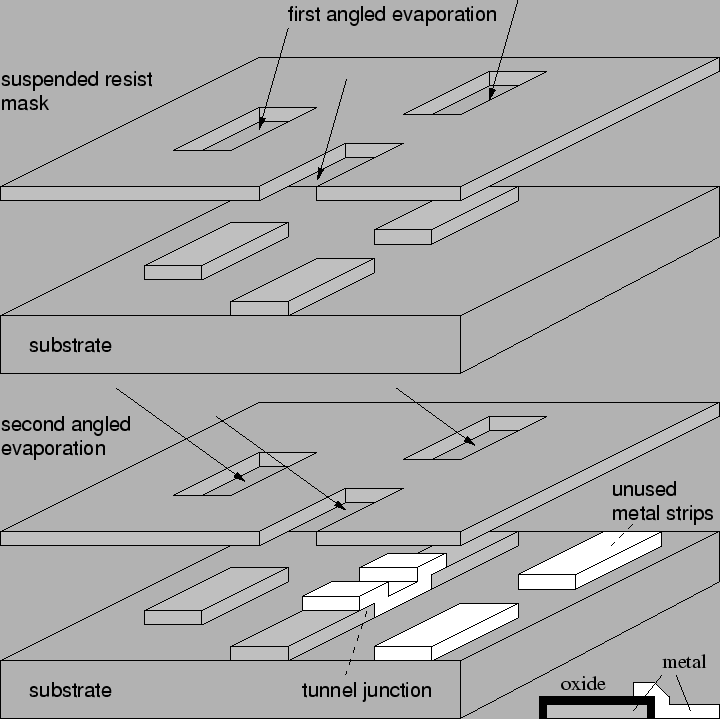



Next: 5.1.2 Step Edge Cut
Up: 5.1 Fabrication Techniques
Previous: 5.1 Fabrication Techniques
The shadow mask evaporation or `hanging resist system' which is shown in
Fig. 5.1 was developed by T. Fulton and G. Dolan [35].
Figure 5.1:
Shadow mask evaporation. Two metal depositions followed by an
oxidation and a further metal deposition from a different angle form an
overlap of two stripes; a tunnel junction.
 |
The junctions are fabricated by use of a lift-off stencil formed through
electron-beam lithography. The suspended mask is a germanium layer deposited
on top of a polymeric resist. Some of the underlying polymer is removed
with the germanium resist coating, forming the overhang. After the first
angled evaporation an oxidation step follows. Then the second evaporation
with a different angle is done. Typical recorded junctions have an area
of 30 nm  30 nm. The technique is well proven, and has been
successfully used to fabricate a number of devices [39]
[106]. The disadvantage is that it is an elaborate procedure with
many steps and the position of unused stripes has to be well thought of to
prevent their interference with existing tunnel junctions.
30 nm. The technique is well proven, and has been
successfully used to fabricate a number of devices [39]
[106]. The disadvantage is that it is an elaborate procedure with
many steps and the position of unused stripes has to be well thought of to
prevent their interference with existing tunnel junctions.




Next: 5.1.2 Step Edge Cut
Up: 5.1 Fabrication Techniques
Previous: 5.1 Fabrication Techniques
Christoph Wasshuber

